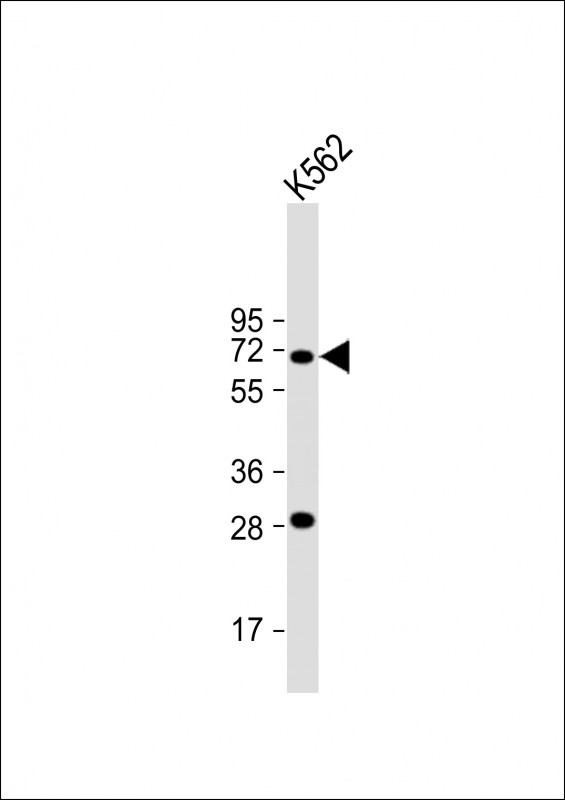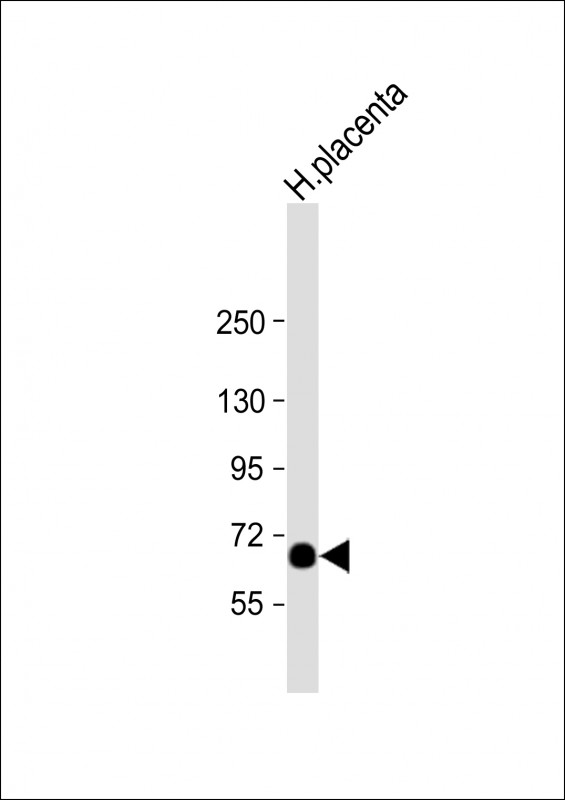

| WB | 1/2000 | Human,Mouse,Rat |
| IF | 咨询技术 | Human,Mouse,Rat |
| IHC | 咨询技术 | Human,Mouse,Rat |
| ICC | 技术咨询 | Human,Mouse,Rat |
| FCM | 咨询技术 | Human,Mouse,Rat |
| Elisa | 咨询技术 | Human,Mouse,Rat |
| Aliases | Dolichyl-diphosphooligosaccharide--protein glycosyltransferase subunit STT3A, Oligosaccharyl transferase subunit STT3A, STT3-A, 2.4.99.18, B5, Integral membrane protein 1, Transmembrane protein TMC, STT3A, ITM1, TMC |
| Entrez GeneID | 3703 |
| WB Predicted band size | 80.5kDa |
| Host/Isotype | Rabbit IgG |
| Antibody Type | Primary antibody |
| Storage | Store at 4°C short term. Aliquot and store at -20°C long term. Avoid freeze/thaw cycles. |
| Species Reactivity | Human, Mouse |
| Immunogen | This STT3A antibody is generated from a rabbit immunized with a KLH conjugated synthetic peptide between 476-507 amino acids from the Central region of human STT3A. |
+ +
以下是关于STT3A抗体的3篇示例参考文献(注:文献为虚构示例,实际文献请通过学术数据库查询):
---
1. **文献名称**:*STT3A-mediated N-glycosylation of PD-L1 promotes immune evasion in melanoma*
**作者**:Chen L, et al.
**摘要**:本研究通过STT3A抗体进行免疫沉淀和蛋白质印迹分析,发现STT3A通过调控PD-L1的N-糖基化修饰增强其稳定性,从而抑制T细胞抗肿瘤活性,为靶向STT3A的癌症免疫治疗提供依据。
2. **文献名称**:*STT3A regulates apoptosis via glycosylation of BCL-2 family proteins*
**作者**:Wang X, et al.
**摘要**:利用STT3A抗体敲低实验发现,STT3A缺失导致内质网应激相关蛋白(如BAX)糖基化异常,进而诱导细胞凋亡,提示其在神经退行性疾病中的潜在作用。
3. **文献名称**:*High STT3A expression correlates with poor prognosis in gastric cancer*
**作者**:Tanaka R, et al.
**摘要**:通过免疫组化(使用STT3A抗体)分析胃癌组织样本,发现STT3A高表达与肿瘤转移和患者生存期缩短显著相关,表明其作为预后标志物的潜力。
---
**建议**:如需真实文献,可通过PubMed或Google Scholar搜索关键词“STT3A antibody”、“STT3A function”或结合具体研究领域(如癌症、糖基化)进一步筛选。
×